News
RSB announces the Photography Competition 2017 shortlist
- Details
- 06 October 2017
The Royal Society of Biology is pleased to announce the shortlist for their 2017 Photographer of the Year and Young Photographer of the Year competitions.
Over 600 entries were narrowed down to a shortlist of two for the Young Photographer of the Year award and a shortlist of 11 for the Photographer of the Year award.
The winners will be announced at the annual Royal Society of Biology Annual Awards Ceremony on 12th October at The Hatton, London, as part of Biology Week 2017.
This year the competition theme was The Hidden World. The natural world harbours a wealth of secrets and surprises, and photographers were invited to uncover this hidden world of biology. The entries featured a wide variety of species from across the globe, from as far as Indonesia and Madagascar, and ranged from microscopic insights into the development of frogspawn, to the incredible emerald hues of an Indian lake photographed from 30,000 feet.
The competition was judged by:
- Tim Harris, Nature Picture Library and Bluegreen Pictures
- Alex Hyde, natural history photographer
- Linda Pitkin, underwater photographer
The Photographer of the Year Competition is open to amateur photographers aged 18 and over, and has a top prize of £1000. The Young Photographer of the Year competition is open to amateur photographers aged under 18, and has a top prize of £500.
The Society wishes to thank Eppendorf for their support of this competition.
Shortlist: Young Photographer of the Year 2017
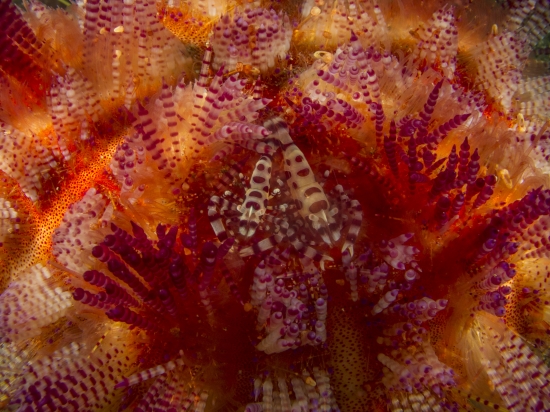
Coleman on Fire by Dheeraj Nanda (Aged 17)
Taken: Ambon, Maluku, Indonesia
The coleman shrimp and fire urchin here share a symbiotic relationship where the coleman shrimp seeks refuge among the spines of the urchin and here the female is the larger one with the male being smaller just like in the case of spiders and a few other insects.
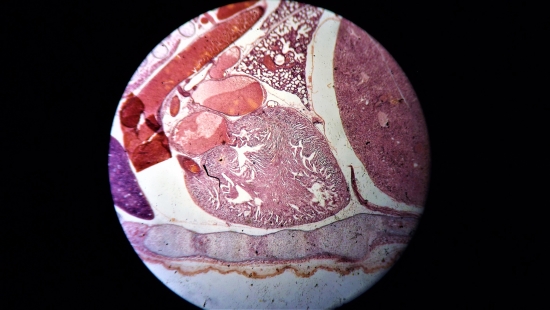
Compact Complexity by Alannah Harding (Aged 17)
Taken: Queen Alexandra Sixth Form College, North Shields, England
The heart of a mouse embryo, perfectly formed and surrounded by other organs. A perfectly formed, miniature powerhouse maintaining balance before life has begun, sustaining a fascinating ecosystem - its own little world - on the scale that only a microscope can see, is truly worthy to fit the theme of Hidden World.
Shortlist: Photographer of the Year 2017

Two big eyes by Miao Yong
Taken: Zejiang province, China
Damselflies look at the environment from behind the leaves.
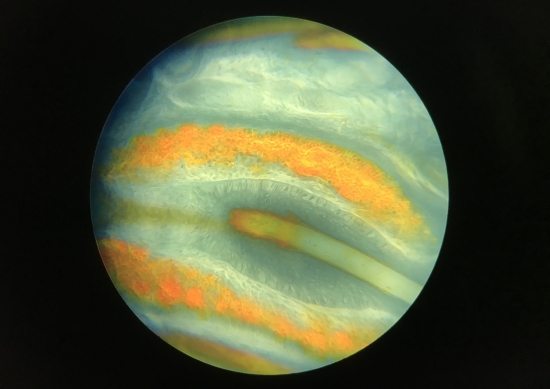
A world just under our skin by James Patterson
Taken: Biology teaching lab, London
A light micrograph of a section through cat skin showing a developing hair follicle. The specimen dates from the ~1950s, yet the vibrancy of the stain used is still breathtaking.

Welcome to my humble abode by Duncan McNaught
Taken: Galloway, South Scotland
Fungi and insect. Living in rural Dumfries and Galloway I have access to some amazing landscapes, flora and fauna but it’s the smaller often overlooked plants and insects that really spark the creative photographer in me.
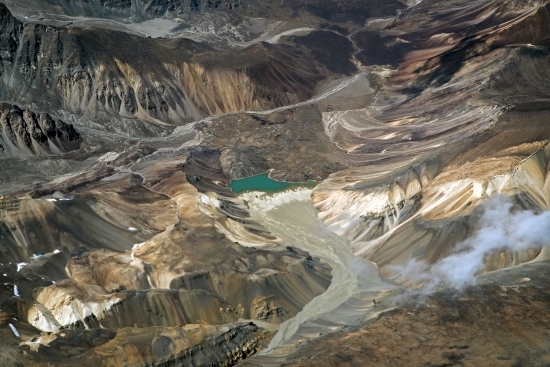
The Emerald Lake by Partha Saha
Taken: Jammu and Kashmir region near Ladakh of India
An emerald green glacial lake is captured in the frame from a flight (height of 30,000 ft MSL). This is the top view of the topography of the Zanskar range near Jammu and Kashmir region of India. This view is really hidden to the general people, because no one can witness this type of scenic beauty from any point on the earth.
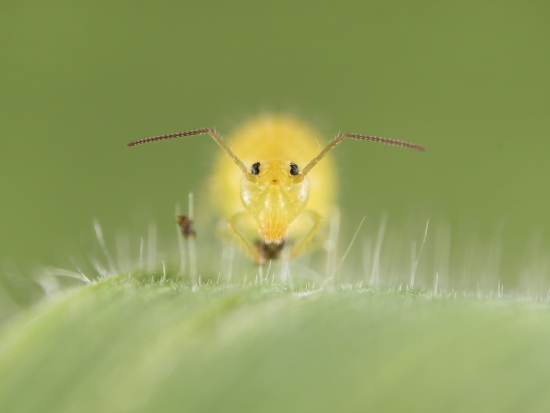
Springtail by Marc Brouwer
Taken: Genemuiden, The Netherlands
Springtails are incredibly small creatures, just a millimetre or two in size, and extremely hard to find. Looking for a springtail is like looking for a needle in a haystack, but then in a field of grass! If you are lucky enough to find one then the chance is high that there are many more nearby. Many people will have never seen a springtail before or even know that they exist, therefore, they fit in perfectly with the theme ‘the hidden world’.
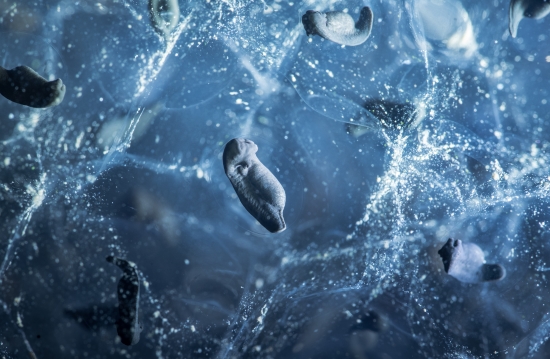
Spawn Development by Amy Bateman
Taken: Croft Foot farm, Kendal, Cumbria
Pictured is the development of the neuro system in common frogspawn. Macro photography and the lighting style I have created allows imagery of details not normally evident to the human eye.

Out of the Darkness by Peter Burkill
Taken: Shiretoko Peninsular, Hokkaido, Japan
Owls are typically birds of the night and so owls are from the dark 'hidden world'. As Blakiston's Fish Owls are so rare, they are particularly ‘hidden’ from us - few people have ever see them.

Life in a drop by Anup Deodhar
Taken: Amboli Maharashtra state, India (Western Ghats)
This is an egg of a Bombay bush frog sized four to five millimetres. In this image a fully developed froglet can be seen in the transparent egg shell. These eggs are so tiny that one can easily miss them in the dense forest of the western Ghats. It was unbelievable to see tiny froglets move in the egg shell, changing positions constantly.
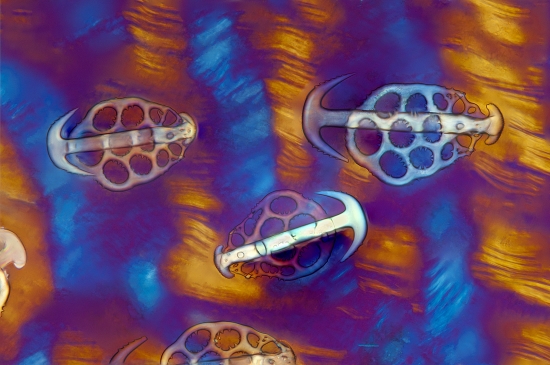
Hooks and anchors by Steve Lowry
Taken: Portstewart, Co. Londonderry
Polarised light micrograph of the skin of the sea cucumber, Synapta, (Echinodermata, Holothuroida), showing paired spicules referred to as ‘plates and anchors’. The sharp spikes of the anchors may act as a deterrent to potential predators. This theory is borne out by the fact that the ‘anchors’ in the edible sea cucumber have a similar appearance to the ‘plates’ and do not have sharp points.
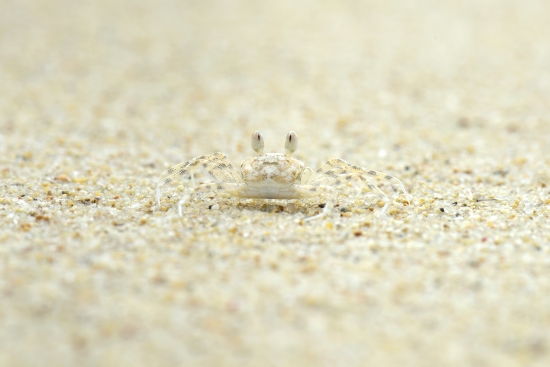
Ghost Crab by Javier Herranz Casellas
Taken: Nosy Be, Madagascar
This curious goose-eyed crab is a specimen of Ocypode Pallidula and is one of the most widespread species in Ocypode. They are called ghosts crabs because of their ability to disappear from view instantly at speeds of over 20 km/h. But when they feel danger is near they remain immobile to try to get rid of predators, blending perfectly with the grains of the sandy beach. But it seems that this method is not effective to prevent the photographer from taking a photo!
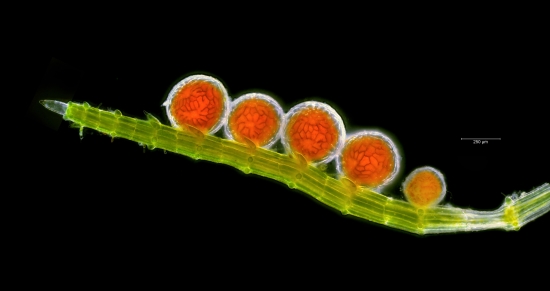
Chara antheridia by Chris Carter
Taken: The Lizard, Cornwall UK. Collected by a colleague, Paul Gainey
This is a line of antheridia on a male branch of the stonewort 'Chara fragifera', one of the algae. Each sphere has a closely-knit set of 'shield cells' with a black outline that give a dramatic setting to the red colouration.
Shortlisted entries can also be viewed in the online gallery.

